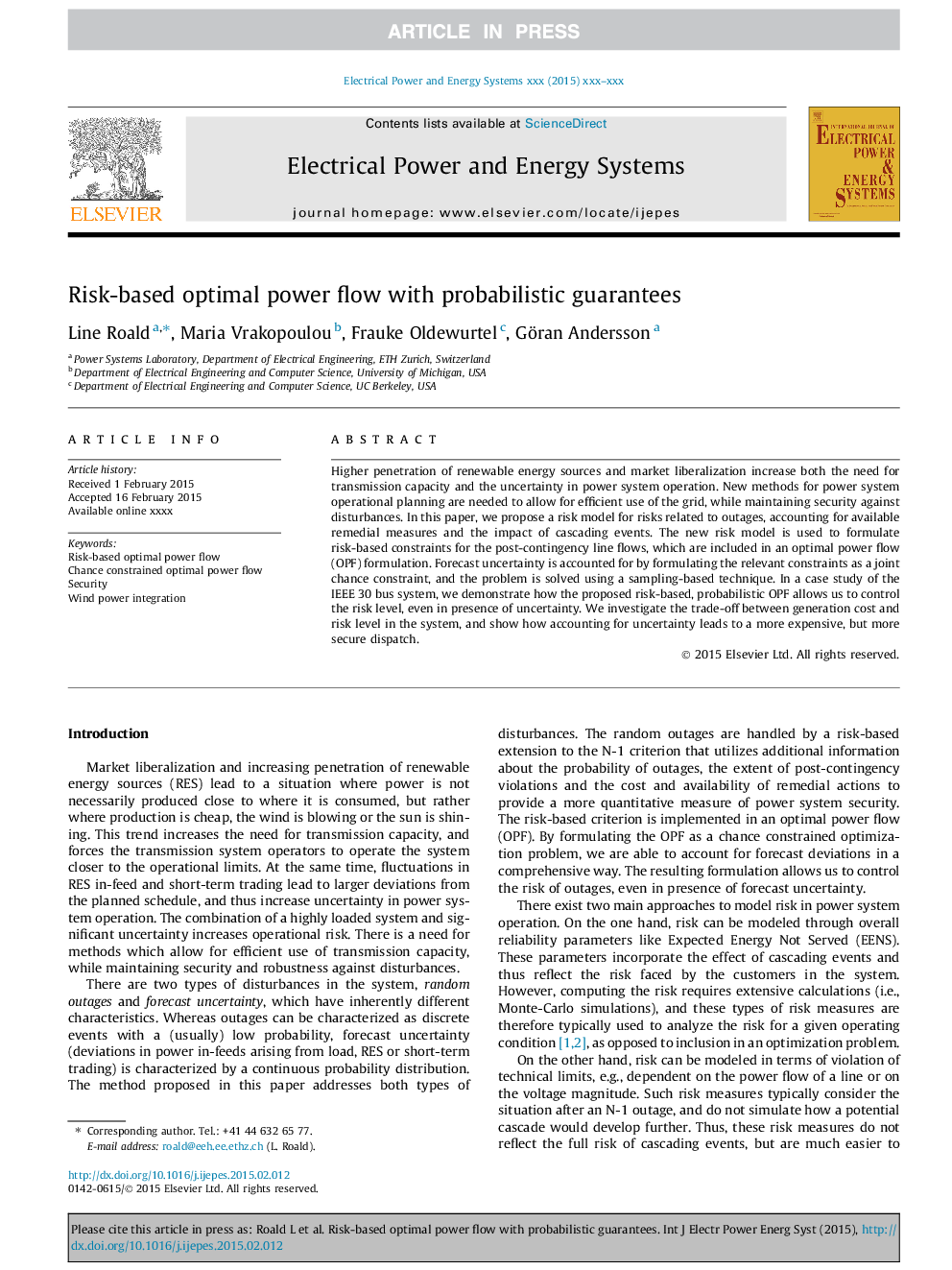| Article ID | Journal | Published Year | Pages | File Type |
|---|---|---|---|---|
| 6859666 | International Journal of Electrical Power & Energy Systems | 2015 | 9 Pages |
Abstract
Higher penetration of renewable energy sources and market liberalization increase both the need for transmission capacity and the uncertainty in power system operation. New methods for power system operational planning are needed to allow for efficient use of the grid, while maintaining security against disturbances. In this paper, we propose a risk model for risks related to outages, accounting for available remedial measures and the impact of cascading events. The new risk model is used to formulate risk-based constraints for the post-contingency line flows, which are included in an optimal power flow (OPF) formulation. Forecast uncertainty is accounted for by formulating the relevant constraints as a joint chance constraint, and the problem is solved using a sampling-based technique. In a case study of the IEEE 30 bus system, we demonstrate how the proposed risk-based, probabilistic OPF allows us to control the risk level, even in presence of uncertainty. We investigate the trade-off between generation cost and risk level in the system, and show how accounting for uncertainty leads to a more expensive, but more secure dispatch.
Keywords
Related Topics
Physical Sciences and Engineering
Computer Science
Artificial Intelligence
Authors
Line Roald, Maria Vrakopoulou, Frauke Oldewurtel, Göran Andersson,
